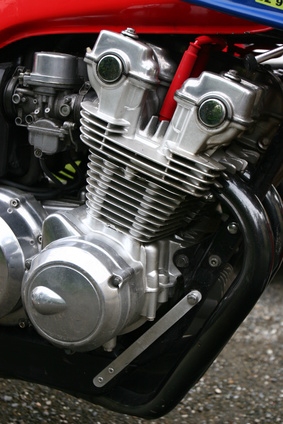
A reed valve in a two-stroke engine works by allowing the fuel flow to go easily in one direction but not backwards. In doing so, reed valves help prevent backflow of fuel and air from returning to the carburetor, which could cause inefficient combustion.
The two-stroke engine reed valve gets installed after the fuel line and carburetor and before the engine intake port. The assembly involves a frame to which the reed petals are attached; the frame is then bolted above the engine intake port. As the engine pulls fuel and air by vacuum, the valve petals open.
Reed valves are only as good as the valve petals used. If the petals get bent or damaged, they cannot close properly to form a good seal. Performance then gets shoddy as the engine starts to flood with too much fuel. With a certain amount of flooding, the spark plug will foul.
Reed valve assemblies are fairly straightforward and can work with a variety of carburetor designs, as long as the carburetor clamps to an intake hose. Bolt-on carburetors that attach to the engine case or a carburetor box, such as on vintage Vespa scooters, cannot use reed valves without serious modification.